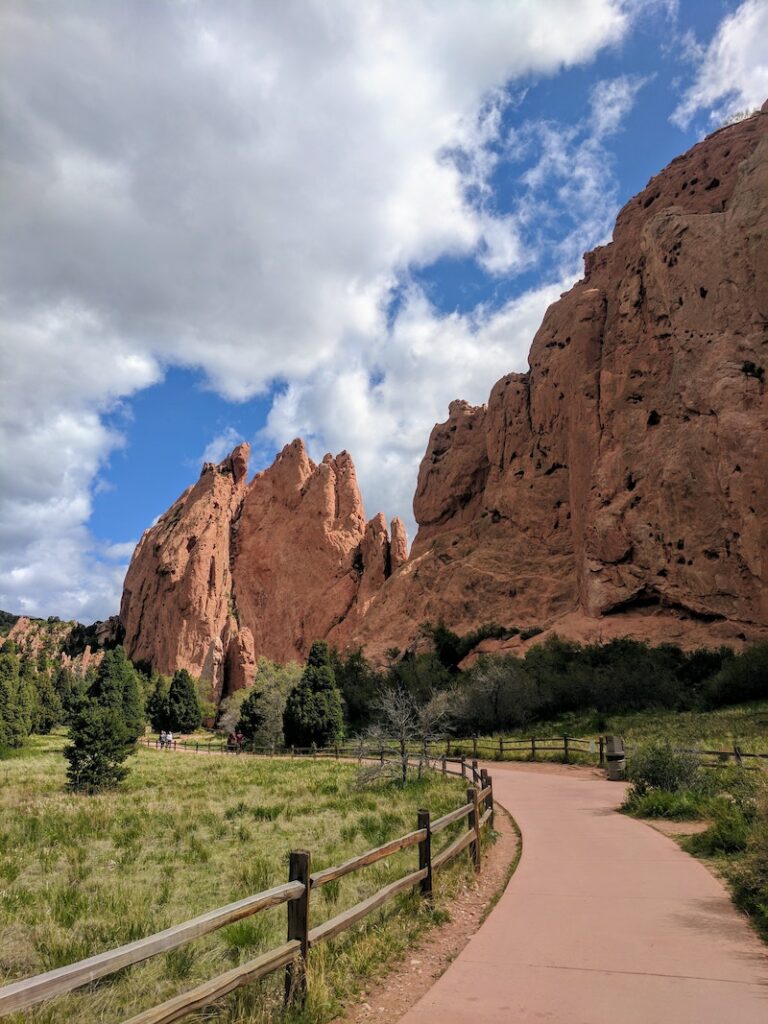Colorado Springs is the second largest city in Colorado. The thriving urban scene of “The Springs” is a unique mix of rich history and modern entertainment. Over 483,000 residents contribute to the diverse culture of the city. But something you should be aware of is possible Colorado Springs altitude sickness which could occur because of the city’s elevation.
Situated at the foot of the Rocky Mountains, the city is surrounded by miles of natural beauty. As a gateway to world-famous landmarks such as Pikes Peak and Garden of the Gods, Colorado Springs is a wonderland for the adventurous. Even those who are more casual in their approach to the great outdoors can appreciate the wilderness in the area.
With all it has to offer, Colorado Springs attracts over 6 million visitors each year. Being in close proximity to the mountains, like many cities in Colorado, means Colorado Springs is a high-altitude city.
Due to its elevation level, visitors coming from locations closer to sea level run the risk of experiencing altitude sickness.
Getting sick in any way, shape, or form can lead to a less-than-ideal vacation, and altitude sickness is no different. In this article, we will cover everything you need to know about altitude sickness in Colorado Springs and how to beat it.
✅ Read: Best activities for each season in Colorado
Read on for your complete guide to a safe, healthy, and amazing Colorado Springs vacation.

What’s the altitude in Colorado Springs?
The altitude in Colorado Springs, Colorado, is 6,035 feet above sea level.
Is Colorado Springs considered high altitude?
According to the National Institutes of Health, anything above 4,900 feet is considered high altitude. Since Colorado Springs sits well over this threshold at 6,035 feet, it would be considered a high altitude.
What’s altitude sickness?
If you’ve ever hiked up a mountain and felt yourself getting nauseous or lightheaded, you may have experienced altitude sickness, also called mountain sickness. This condition happens when you travel to a high altitude (elevation) too quickly. Symptoms occur when your body tries to adjust to the lower air pressure and lower oxygen levels at high altitudes.
Colorado Springs altitude sickness: tips on how to beat it
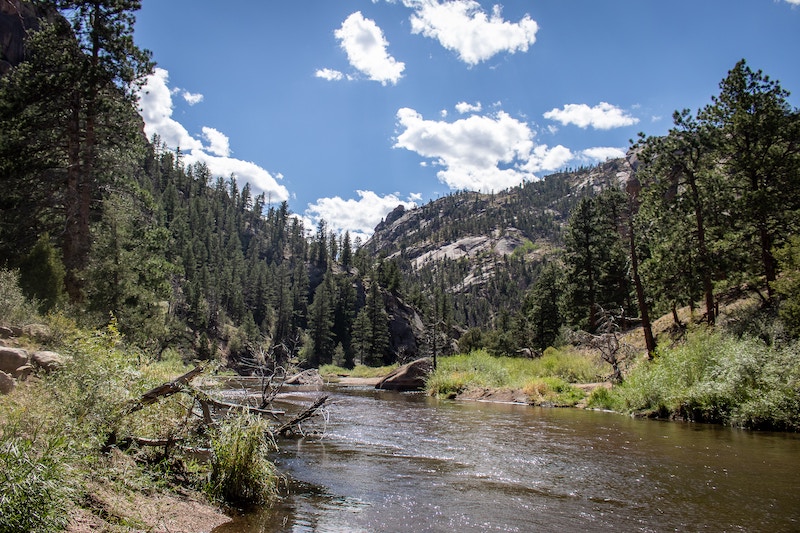
Drink plenty of water
At high levels of altitude, your body has to work hard to get oxygen. As a result, your body will lose water much faster than usual. When in Colorado, it’s extremely important to drink more water than you think you should.
Avoid strenuous hikes
The harder the hike, the harder your body will work to breathe and get oxygen. This increases the risk of altitude sickness. Look for hikes listed online as “easy” or “moderate” rather than “difficult.”
Take good rest
This is especially important at the beginning of your trip, so you can allow your body to adjust to the altitude. Stay relaxed or plan more leisurely activities during the first couple of days of your trip. If you end up doing something more active, make sure to plan for some rest time throughout the day.
Limit alcohol consumption
Altitude sickness causes symptoms to the body that are similar to those of a hangover from drinking alcohol, so having both at the same time is a double whammy. Drinking alcohol worsens the symptoms of altitude sickness by reducing oxygen in the blood and dehydrating the body. If you do choose to drink, start slowly and mix in plenty of water.
Travel with someone else
If you start experiencing altitude sickness, you need someone else who could help you out, especially if it’s a severe case.
Altitude sickness can cause symptoms such as dizziness and lack of coordination, which can be difficult to deal with alone. Severe cases can lead to fluid within the lungs and brain. When venturing into high levels of altitude, it’s always best to practice the buddy system.
Use plenty of sunscreen to avoid sunburn
The state of Colorado loves to boast that it receives over 300 days of sunshine per year (although that number may be a little inflated, according to The Denver Post). Regardless of technicalities, Colorado is one of the sunniest states in the US. Mix that with being closer to the sun at high altitudes and a love for the outdoors, and people in Colorado are at high risk of sunburn.
Having altitude sickness is bad enough on its own, so you certainly don’t want to exacerbate the situation with a sunburn. Even at lower altitudes, it’s essential to apply sunscreen 15 minutes before going outside. After that, reapply every 2 hours to avoid getting burned by the strong Colorado sun.
Wear proper sunglasses
The sun’s UV rays can also be harmful to your eyes, even on cloudy days or during the winter. To protect your eyes from potential damage, it’s important to wear proper sunglasses while enjoying the great outdoors. For the best defense, look for shades that offer 100% UV protection, a wraparound style, and polarization.
Watch out for what you eat
A smart diet is key when it comes to fighting altitude sickness. You should limit your salt and sugar intake to avoid lowering your hydration levels. Try to focus on eating healthy carbohydrates, but don’t “overeat” as this can lead to stomach aches.
Some examples of healthy carbs include dates, bananas, sweet potatoes, and oats.
What are the symptoms of altitude sickness in Colorado?
If you start experiencing symptoms of altitude sickness while hiking in Colorado, it’s okay to turn around. In fact, it can save your life. While there can be weak, mild, and severe cases of altitude sickness, the mild and severe cases can be fatal if untreated.
The common symptoms of weak altitude sickness include:
- Swollen hands
- Headache
- Short of breath
- Confusion
- Vomiting
- Upset stomach
You should be able to treat these symptoms with over-the-counter medications, just as you normally would.
More serious cases of altitude sickness could include:
- Loss of coordination and trouble walking
- A severe headache that doesn’t get better with medication
- A tightening in your chest
- Shortness of breath even at rest
- Inability to walk
- A cough that produces a white or pink frothy substance
- Coma
If you continue to experience these severe symptoms after medication, you should seek medical attention.
What are the highest peaks near Colorado Springs?
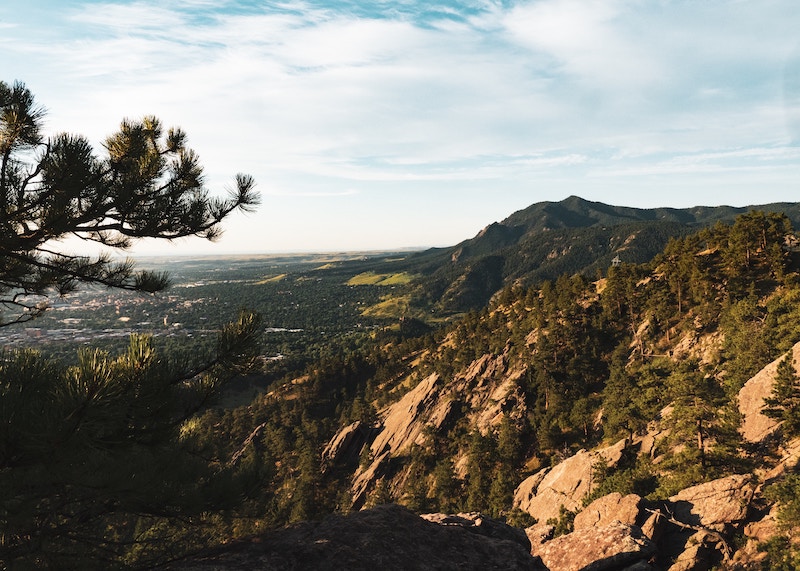
Manitou Incline
The Manitou Incline, or simply ‘the incline’ to locals, is one of the most popular hikes in the Colorado Springs area. The hike consists of a set of stairs that take you up 2,000 vertical feet from base to top. After 2,744 steps, you will be at an altitude of 6,412 feet.
Located just 15-20 minutes west of downtown Colorado Springs, the hike is relatively easy to get to by car. The hike is free, but you will need to register ahead of time on the City of Colorado Springs website.
Cripple Creek
The historic district in Cripple Creek is designated as a National Historic Landmark by the National Park Service. This old gold mining town is located about 20 miles southwest of Colorado Springs, and there are some beautiful hikes in the area.
Horseshoe Falls is a 3-mile, out-and-back hike that peaks at an elevation of 10,333 feet. Then there’s the Dome Rock Loop, which loops around the famous rock for 10.8 miles, and there aren’t any shortcuts. The trail only peaks at 9,668 feet, but you will gain 1,590 feet of elevation during the lengthy trek.
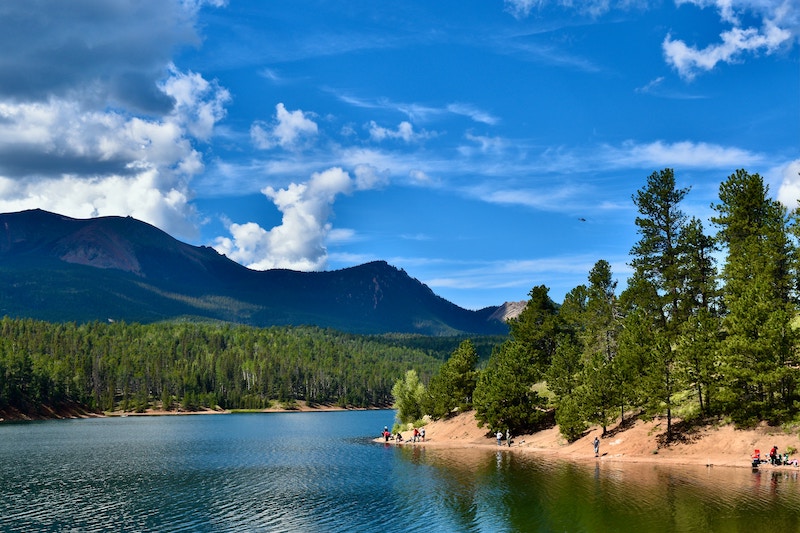
Pikes Peak
Standing at 14,115 feet, Pikes Peak is the tallest mountain in Colorado’s southern Front Range. The iconic peak is also said to be the inspiration for the song, “America the Beautiful,” earning it the nickname America’s Mountain.
Unlike most mountains of this stature, you can actually drive to the summit via Pikes Peak Highway. While it is possible to hike to the top of Pikes Peak, the less strenuous option is renting a car and making the scenic drive. The round-trip journey takes about 2-3 hours, but 3-4 hours is recommended to capture photos and enjoy the breathtaking views.
Don’t feel like driving yourself? This Pikes Peak Jeep Tour allows you to ride in style with a local guide. These guides are passionate and entertaining as they share the history and folklore of the mountain.
Things to do in Colorado Springs to get used to the altitude
Walk Through Monument Valley Park
This popular park is found within the city limits of Colorado Springs, but the green trees and Monument Creek offer a nice slice of nature in the urban area. You can find several amenities within the 153.4-acre park, such as playgrounds, hiking and biking trails, and an outdoor pool.
Explore Old Colorado City
This charming neighborhood is full of rich history and plenty of things to do. You can enjoy galleries, restaurants, and boutiques housed in the brick buildings that line these historic streets. If you really want to get in the Old Colorado spirit, check out one of the several antique stores.
Take a Low-Elevation Hike at Red Rock Canyon Open Space
If you’d like to go on a hike without the elevation gain, head over to Red Rock Canyon Open Space. Conveniently located about 8 minutes from downtown Colorado Springs, this park boasts 11 marked trails for relaxed hiking. The space also includes a picnic pavilion and an off-leash dog area.
Admire the U.S. Olympic & Paralympic Museum
Named the country’s Best New Attraction in 2020 by USA Today, this museum is a must-visit for sports lovers. The modern museum contains interactive exhibits, innovative displays, and a comprehensive artifact collection. This 60,000-square-foot attraction is a great way to learn about the journeys of Team USA’s Olympic and Paralympic athletes.
Check out the Manitou Cliff Dwellings
Marveling at the mystery of these ancient dwellings is one of the most unique things to do in the area. You can explore the inside of these architectural wanders to get a glimpse of Native American culture from 700 years ago. There’s also a museum on site that further depicts what daily life was like for the people who built these stunning dwellings.
Best time to visit Colorado Springs
The shoulder seasons of March-May and September-October are excellent times to visit Colorado Springs. The weather is mild and the crowds are light.
Summertime from June-August in Colorado Springs brings amazing weather, with average temperatures in the low 80s. This is also peak tourist season, so keep in mind that the crowds will be large during this period.
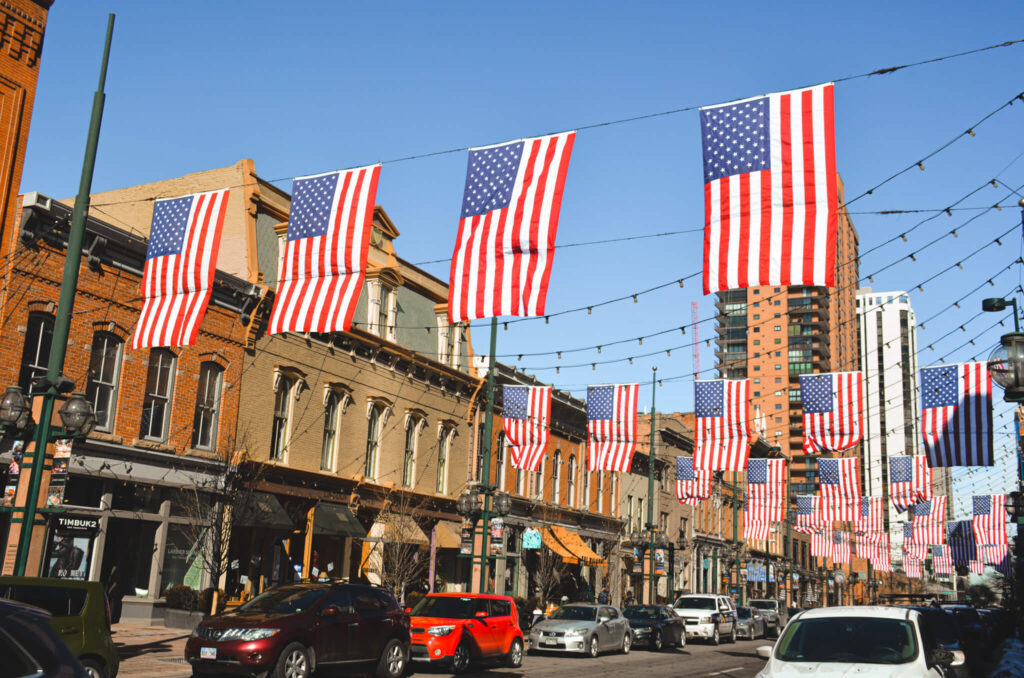
How far is Colorado Springs from Denver?
Colorado Springs is located 70 miles from Denver. It takes about 1 hour and 5 minutes to drive from Denver to Colorado Springs.
Denver to Colorado Springs
Denver to Colorado Springs bus
There is a bus that travels from Denver’s Union Station to Colorado Springs 1-2 times per day. The trip takes about an hour and a half and tickets cost $17.
Denver to Colorado Springs Uber
There are plenty of Uber drivers in Denver, so booking a ride through the Uber app should not be too difficult. The journey to Colorado Springs will take about an hour and an UberX is estimated to cost around $95.
Denver to Colorado Springs car rental
Renting a car is a great option for traveling from Denver to Colorado Springs, as it allows you to make stops and see any sights between the two cities. The drive is simple, as nearly the entire trip takes place on I-25 South, but keep in mind that traffic outside of Denver can cause significant slowdowns during rush hour.
Colorado Springs altitude sickness: FAQ
Is Colorado Springs’ altitude higher than Denver’s?
Yes, the altitude of Colorado Springs is 6,035 feet above sea level, while Denver sits at 5,280 feet.
Will I get altitude sickness in Colorado Springs?
While altitude sickness in Colorado Springs is always a possibility for those traveling from lower altitude levels, it’s certainly preventable and treatable. If you follow the tips listed above, such as staying hydrated and allowing your body time to adjust, you can lower your chances of getting altitude sickness.
How long does it take to adjust to Colorado Springs’s altitude?
In many cases, it takes about one to three days to fully adjust to the altitude in Colorado Springs. However, everyone is different. Some people may not notice any difference at all, while others may need several days to get used to the altitude.
How likely are you to get altitude sickness in Colorado?
About one in five people traveling to the mountains in Colorado suffer altitude sickness. However, you can do your best to beat it by following the tips above.
Colorado Springs altitude sickness: Final word
Colorado Springs is a great city with no shortage of fun activities. The best way to enjoy your visit is by staying safe and avoiding getting sick. As long as you follow the tips for beating altitude sickness listed in this article, you should have no issues.
The altitude of Colorado Springs is part of what makes the city so special. Colorado Springs’ high altitude brings beautiful nature, awe-inspiring peaks, and amazing activities. It should not be something to fear, but rather, a reason to rejoice!
